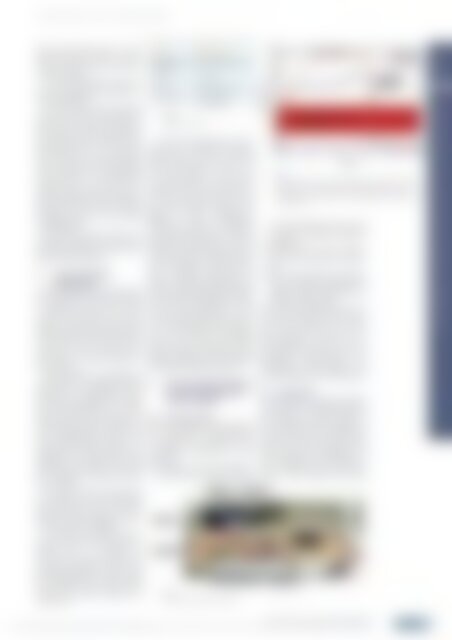atw - International Journal for Nuclear Power | 11/12.2019
Ever since its first issue in 1956, the atw – International Journal for Nuclear Power has been a publisher of specialist articles, background reports, interviews and news about developments and trends from all important sectors of nuclear energy, nuclear technology and the energy industry. Internationally current and competent, the professional journal atw is a valuable source of information. www.nucmag.com
Ever since its first issue in 1956, the atw – International Journal for Nuclear Power has been a publisher of specialist articles, background reports, interviews and news about developments and trends from all important sectors of nuclear energy, nuclear technology and the energy industry. Internationally current and competent, the professional journal atw is a valuable source of information.
www.nucmag.com
Create successful ePaper yourself
Turn your PDF publications into a flip-book with our unique Google optimized e-Paper software.
<strong>atw</strong> Vol. 64 (2019) | Issue <strong>11</strong>/12 ı November/December<br />
steel. Tested paint layers can be<br />
ablated at fluence above 1.8 J/cm²,<br />
while oxide layers can be removed at<br />
even lower fluence.<br />
The achieved ablation depth <strong>for</strong><br />
the above mentioned materials is<br />
plotted in Figure 2.<br />
It can be seen that the removal<br />
speed is about 100 times higher <strong>for</strong><br />
paint than <strong>for</strong> metals, what supports<br />
the selective removal of the paint on<br />
the metal ground. A variation of laser<br />
fluences between 1.8 – 3.5 J/cm² has<br />
been tested <strong>for</strong> its decontamination<br />
effect on blank austenitic steel. Single<br />
scans resulted in a contamination<br />
reduction of 50 – 90 % <strong>for</strong> all surrogates.<br />
Similar tests have been conducted<br />
on painted surface applying a<br />
laser fluence of 4.4 J/cm², to prove<br />
complete removal of the covering<br />
layer (Figure 3).<br />
Both tested cases result in a<br />
decreased contaminant concentration<br />
and decontamination factors up to<br />
98.9 have been achieved.<br />
4 Laser-based PCB<br />
degradation<br />
The TU Dresden has developed a PCB<br />
decontamination process by utilising<br />
a continuous wave diode laser.<br />
Laboratory experiments on concrete<br />
surfaces coated with epoxy paint<br />
demonstrated a reduction of 96.83 %<br />
of the PCB value. The PCB decomposition<br />
rate on the surface and in<br />
the exhaust gas be<strong>for</strong>e filtering is<br />
88.75 % [16].<br />
PCB decomposes at temperatures<br />
above 800 °C. At optimized process<br />
parameters the temperature in the<br />
laser spot is much higher [17], enable<br />
the full decomposition of the PCB.<br />
Rapid cooling of the exhaust gas is<br />
required to prevent the <strong>for</strong>mation of<br />
toxic polychlorinated dioxins and<br />
furans (PCDD/PCDF) which can be<br />
ensured by the laser processing. The<br />
application of a fabric filter in the<br />
extraction and filtration unit limits<br />
the temperature of filtered exhaust<br />
gas to

















